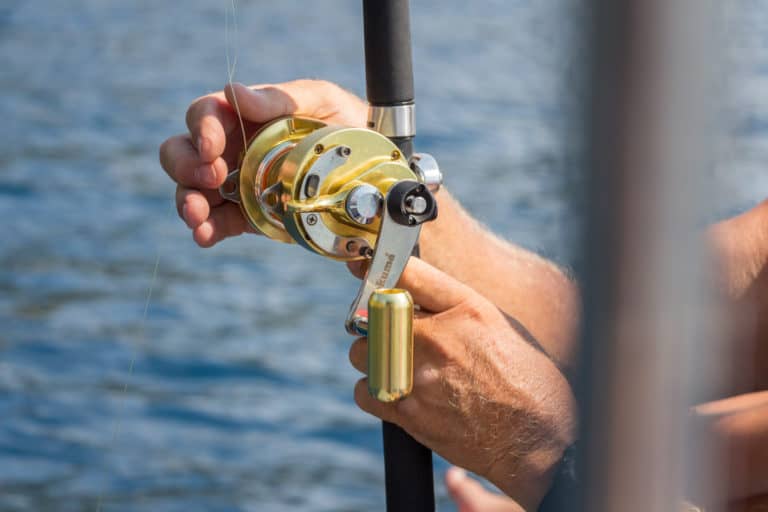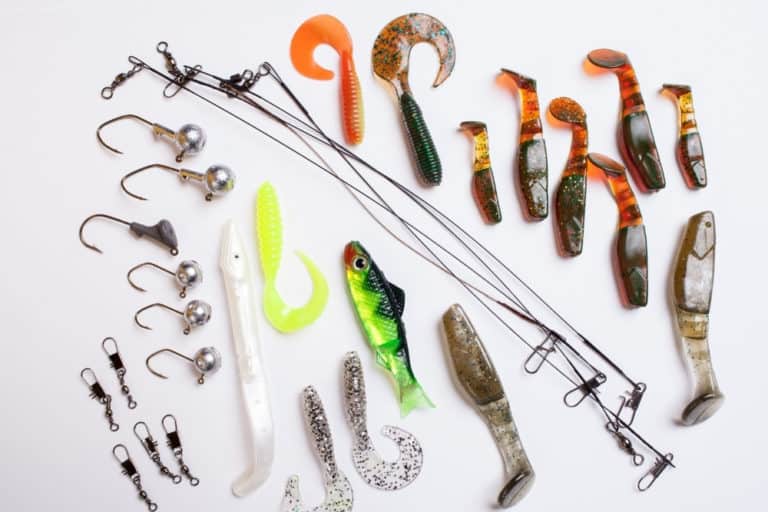How Far Can You Cast A Baitcaster?
That depends on a variety of factors! The average angler, provided they are proficient, can hit around 25-30 yards without much effort, so long as the tackle is good and wind conditions are optimal.
Likewise, getting the right equipment for your favored kind of fishing is also an important aspect. If you’re looking for long-distance casting, then you’re going to want a decent 10 to 12 foot pole that’s able to cast a good few ounces of weight.
Rod power and action is also important: power refers to how much force is required for bending the rod, with a rating of medium or medium-fast usually being appropriate for most situations.
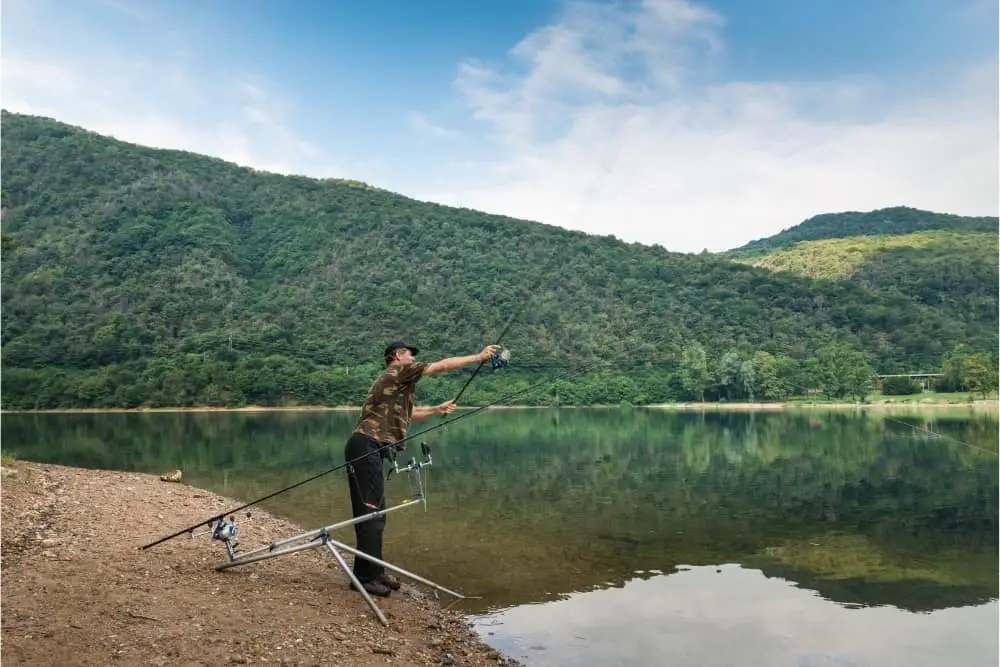
Action, on the other hand, measures how much the rod tapers, with most anglers opting for a medium, medium-heavy or heavy rating depending on the scenario – casting further calls for a lighter action, though.
The biggest contributing factor to good casting is the individual angler’s technique – even if you have a fantastic rod and an even better reel, you’ll struggle to use them well if you’ve not been taught how to cast properly.
Why can’t I cast my baitcaster very far?
There are several reasons why your baitcaster is not getting line out as far as you might like it to:
Line quality: although cheap, brandless lines can be tempting for their affordable price tag, if you’re looking to cast great distances, you need the good stuff.
Being generally difficult to use, typically heavier than its label suggests and quite unstable, you’ll find that your fishing improves significantly when you opt for premium quality.
Though it’s more expensive, you’ll find that it’s a great deal stronger even when it’s thinner: the lighter the line, the further the cast!
A supple line will lead to smaller coils, which means it can pass through the guides of your rod with less friction and therefore less air resistance. Shimano Technium, Gardner Hydroflo and Gardner Pro Blend are some recommended line brands.
Brakes set too high: the majority of baitcasting reels come with a braking system – it’s possible this is preventing you from casting as far as you might like, providing too much tension on the spool because you’ve set it up too high.
This will decrease your maximum casting distance, allowing you to be more precise; if you’d rather compromise accuracy for casting farther, turn the brakes down a little.
Ball bearing quality: in order to achieve the kind of distances you’re trying for, you need to make sure the ball bearings inside your reel are not only made from good quality stainless steel, but are also as smooth and lubricated as possible. It’s also possible that if you have multiple ball bearings of poor quality, this is impacting your cast too.
Rod size: it’s pretty basic knowledge that the longer your rod is generally, the farther you’ll be able to cast it. Should you be working with a five or six foot rod, it might make sense to upgrade somewhere in the ball part of seven to nine feet, allowing you to achieve a greater distance right from the off.
It could also be that your power rating is not appropriate for further casting; you want a light, medium-light or medium power rod, as it takes less force to bend, allowing you to cast further.
Not enough lubrication: failing to perform regular maintenance of your reel could be impacting on your casting. You need to regularly clean your baitcaster with warm water – especially if you head out to saltwater on a regular basis.
Every month or so (depending on how regularly you fish) it is important to totally disassemble the reel, wash all of the internal components and lube them all up after. Any dirt, debris or buildup causes added friction amongst the parts, thus preventing your reel from moving as smoothly as it should.
Casting into wind: this one is just physics! If you’re casting into the wind as it blows against you, then your lure and the line it is attached to simply won’t go as far as you want it to. Naturally, you can solve this one pretty quickly, by casting towards the wind instead of trying to move against it.
Lack of practice: as with anything in life, the more you do something, the better at it you will get! It is important to go out in all seasons, even if you feel a little foolish doing so in the middle of winter, to keep your technique up. Watch Youtube videos and read tips and tricks from other anglers.
What is the best reel for casting a long distance?
In an ideal world, you want either a spinning or baitcasting reel for long distance casting. That being said, the difference between one brand’s reel and another when it comes to casting distance is usually minimal – again, it’s about the other things, including technique and line quality.
Generally speaking, a large line capacity is of course important, because you can’t physically cast out far without enough line! It’s suggested that at least 300 yards of line is the sweet spot, which of course sounds like far too much, but it’s definitely better to have too much than not enough, especially when trophy fish are concerned.
With a baitcasting reel, your priorities are choosing one that does not come with a levelwind, as these tend to increase resistance on the line whilst you’re casting and will impact on your distance.
If you’re opting for a spinning reel, then you ought to ensure it has an aluminum spool, which allows you to use the free-spool (also known as baitrunner) technique, where fish can peel line whilst taking bait and also avoid pulling your rod (or even you!) over into the water.
In terms of brand recommendations, most anglers would advise you to stick to the Daiwa or Shimano range of reels in order to get a quality product. These have proven time and again to be suitable whatever the angler’s skill level.

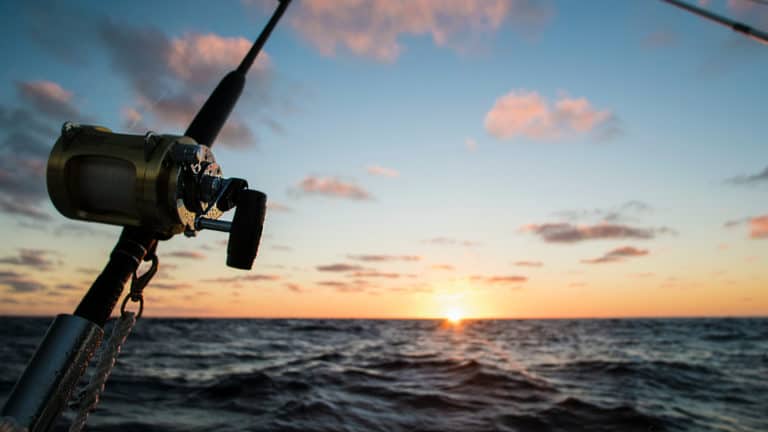
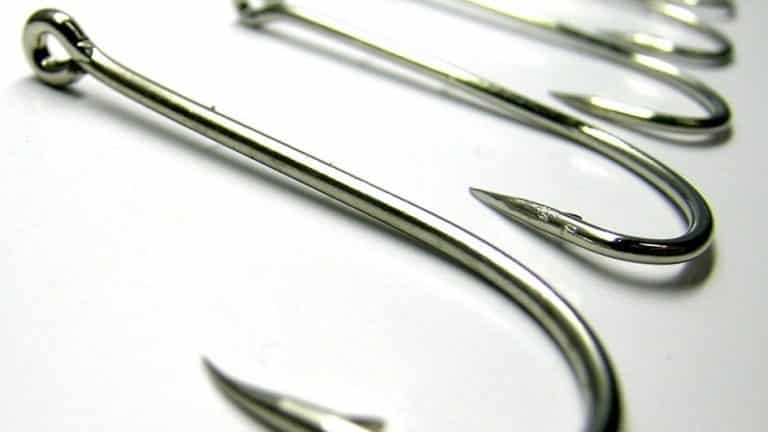

![Best Surf Fishing Rods: Top 5 Rods [Reviews & Buyers Guide]](https://watersportingadventure.com/wp-content/uploads/2020/10/1825297_bc6bfebf-e1601744206236.jpg)
